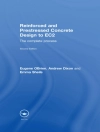Plasma decontamination is a rapidly expanding area of modern science and engineering. An increasing number of engineers are using plasma methods for decontamination of chemical and biological agents. Plasma decontamination is effectively applied today to clean and sterilize different surfaces, high volume air and water streams, industrial exhausts, and even living tissue of animals and humans. This book provides a fundamental introduction to virtually all aspects of modern plasma decontamination, as well as the most recent technological achievements in the area.
The book is segmented into four specific sections of modern plasma decontamination: (1) plasma bio-decontamination, including disinfection and sterilization of surfaces, water and air streams; (2) plasma decontamination of chemical agents, including cleaning of air, water, and industrial exhaust gases from different pollutants and especially volatile organic compounds VOC; (3) plasma treatment of living tissue, including different subjects of plasma medicine from skin sterilization to tissue engineering; (4) major electric discharges applied for the plasma-assisted decontamination of chemical and biological agents.
Cuprins
Preface. 1. Plasma for Bio-decontamination. 1.1 Biological Decontamination Using an Atmospheric Pressure Resistive Barrier Plasma Discharge; I. Alexeff et al.- 1.2 Plasma for Air and Water Sterilization; A. Gutsol et al.- 1.3 Pulsed Submerged Arc Plasma Disinfection of Water: Bacteriological Results and an Exploration of Possible Mechanisms; R. L. Boxman et al.- 1.4 Antimicrobial Treatment of Heat Sensitive Products by Atmospheric Pressure Plasma Sources; R. Bradenburg et al.- 1.5 Cold Plasma – a Powerful Agent for Biological Applications; V. A. Gostev et al.- 1.6 Preliminary Evaluation of a Low Power Pulsed Corona Discharge for Characterization of Liquids; D. Staack et al.-1.7 Concurrent Treatment of Chemical and Biological Contaminants in Water by a Pulsed Arc Electrohydraulic Discharge; J. S. Chang and K. Urashima.- 2. Plasma for Chemical Decontamination. 2.1 Multi-Pollutant Gas Removal Characteristics of Corona Discharge Radical Shower-Catalyst Hybrid System for Treatment of Jet Engine Test Cell Flue Gases; K. Urashima and J. S. Chang.-2.2 Pulsed Corona Plasma Pilot Plant for VOC Abatement in Industrial Streams; A. Fridman and A. Gutsol.- 2.3 Degradation of Organics Compounds and Production of Activated Species in Dielectric Barrier Discharges and Glidarc Reactors; J. M. Cormier et al.-2.4 Mechanisms of Conversion of Heavy Hydrocarbons in Biogas Initiated by Pulsed Corona Discharges; V. A. Bityurin et al.- 2.5 Plasma Methods for Toxic Wastes Processing; S. A. Zhdanok and A. L. Mosse.-2.6 Environmental Control Plasma Educational Laboratory; V. Genis et al.- 3. Plasma Decontamination in Medicine.3.1 Cold Plasma Treatment of in vitro Dental Plaque; S. K. Foloche et al.-3.2 Applications of Non Thermal Atmospheric Pressure Plasma in Medicine; S. Kalghatgi et al.- 3.3 Penetration of Dielectric Barrier Discharge Treatment into Fluid for Biomedical Applications; G. Fridman et al.- 3.4 Plasma Surface Modification of Three Dimensional Poly(-Caprolactone) Scaffoldsfor Tissue Engineering Application; E. D. Yildirim et al.- 3.5 Plasma Assisted Surface Modification Processes for Biomedical Materials and Devices;P. Favia et al.- 4. Electric Discharges for Plasma Decontamination.4.1 Nano-Second Dielectric Barrier Discharge for Direct Medical Applications;H. Ayan et al.-4.2 Uniform and Filamentary Nature of Continuous-Wave and Pulsed Dielectric Barrier Discharge Plasma; M. Cooper et al.- 4.3 Continuous and Pulse Power Supplies for Different Plasma Applications; N. Medvedeva and D.Medvedev.-4.4 Plasma and Gas Discharge Methods of Air and Gas Purification;D. Medvedev et al.- 4.5 Model for Development of Electric Breakdown in Liquids and Stability Analysis; Y. Yang et al.-. 4.6 Simulation of Atmospheric Pressure Non-thermal Plasma Discharges for Surface Decontamination Applications; T. Farouk et al.- 4.7 Detection of Solar Plasma Influence on the Satellite Channel of Communication; K. A. Karimov and R. D. Gainutdinova.-4.8 Simple’ Diagnostics of the Low Pressure Plasmas in Chemically-Active Media;D. K. Otorbaev.-












